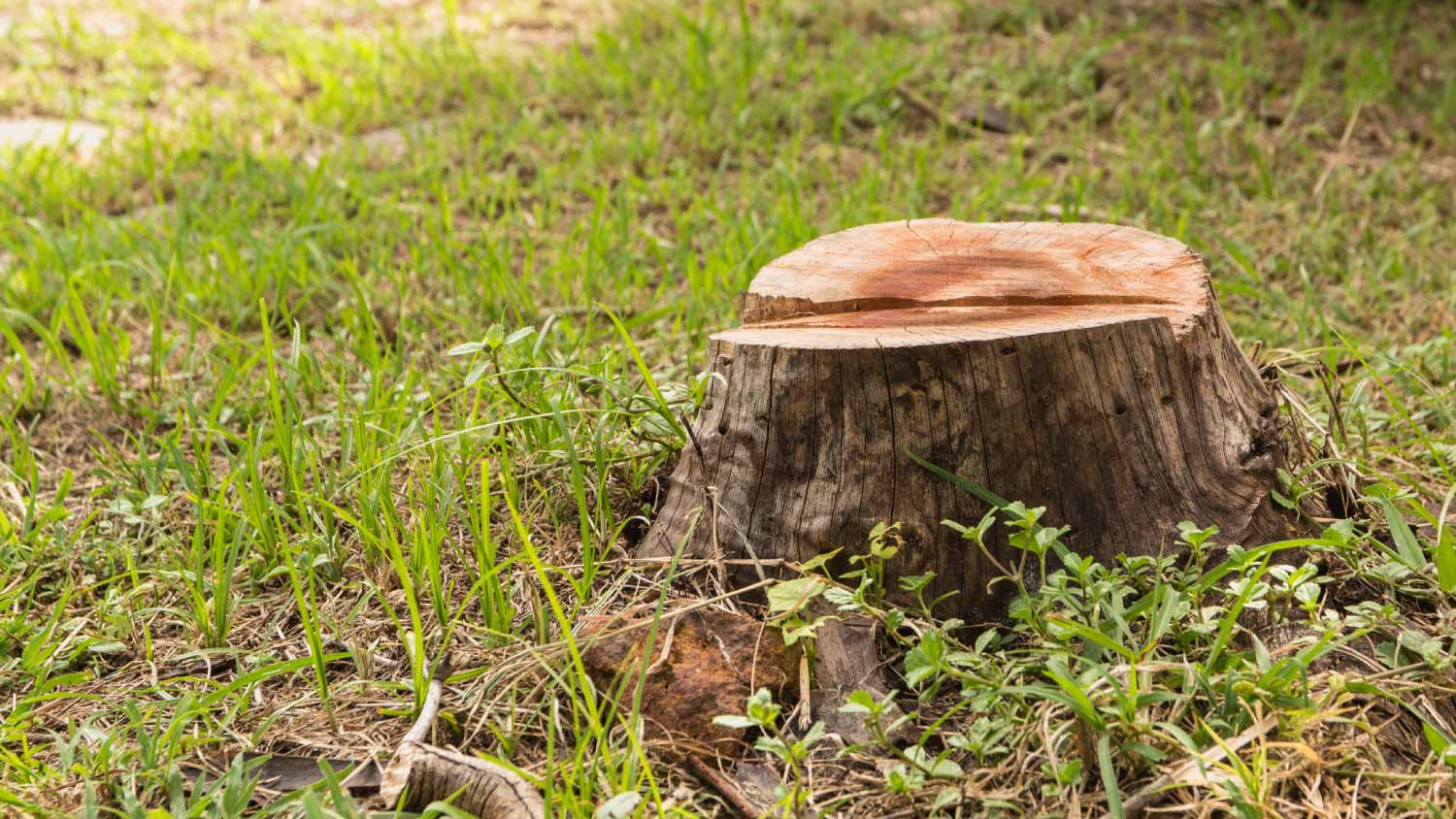Get transparent shrub removal cost info. Learn average prices, key cost factors, and tips to save on your next shrub removal project.
Who Do I Call to Grind a Stump?
Don’t let a leftover stump grind your yard cleanup to a halt


Stump grinding involves breaking up a tree stump and its roots until they are just tiny wood chips. If you know how to kill a tree but still wonder, ‘Who do I call to grind a stump?’ you’ll be happy to know hiring a tree stump removal company can handle the job.
Benefits of Hiring a Stump Removal Service for Stump Grinding
Tree service companies, specifically those specializing in stump removal, are tree care and maintenance experts. They also know the best methods for killing a tree stump and which one is right for your situation. In many cases, grinding the stump is the right option, as it can:
Make your yard look better by eliminating the unsightly stump and visible roots
Open up space for groundcover or hardscaping
Eliminate dangerous trip hazards in your yard
Remove obstacles that can damage your lawnmower
Destroy a potential breeding ground for termites and carpenter ants
Local stump removal companies are some of the only businesses with experience handling stump grinding equipment, so they are typically the only pros offering this service. While tree service companies may offer stump grinding as an additional service when removing a tree, stump removal companies are still the best option since you need someone experienced and knowledgeable in this process to ensure they eliminate the stump and its visible roots.
Can I DIY Grind a Stump?

It’s possible to learn how to use a stump grinder to remove unsightly stumps from your yard, we don’t recommend it. Stump grinding is a challenging process that requires the use of large, dangerous machines weighing over 1,000 pounds. Stump grinders require training and experience to use them properly and safely. Additionally, only a local stump grinding service will have sufficient liability insurance to cover this heavy-duty machinery. It’s best to leave this task to the stump grinding pros to avoid the risk of injury or damage to your property.
Can I Hire a Tree Removal Service to Grind a Stump?
If you can’t find a stump removal service in your area, the next best option is to hire a tree removal service. Tree removal specialists typically offer stump grinding as an add-on service after removing a tree from your yard, so they have the equipment and expertise necessary to complete this task. However, you should be sure to ask whether the tree removal service specializes in stump grinding before hiring them for the job.
How Do Stump Removal Experts Grind Stumps?
If you hired a local stump removal service to remove your property’s stumps, you can expect them to follow these general steps. First, the stump grinding pros will prepare the area around the tree stump to cut it as close to the ground as possible. Then, they’ll use a stump grinder to grind the stump and any visible roots into wood chips, going from three to eight inches below the ground. They will leave the resulting mulch in the hole where the stump was or haul it away for you.
After the pros grind the stump, you can leave the wood chips in place or remove them and fill the hole with soil to plant sod or install hardscaping, like pavers. Since the stump will remain below ground, you may be unable to grow plants with deeper roots, such as new trees.
The homeowners guide to tree services
From average costs to expert advice, get all the answers you need to get your job done.
- •

How much does it cost to rent a chainsaw? Whether it’s for cleaning up your yard or cutting firewood, learn what options are available and what you’ll pay.
 •
•Get a clear estimate of palm tree maintenance cost, including trimming, fertilization, and pest control, so you can keep your palms healthy and your budget on track.

Unattended bushes and shrubs can quickly become overgrown and start causing problems. Rein them back in with our overgrown shrub trimming guide.

When trees suffer a lightning strike, what happens to it? Here’s what happens, the factors at play, and what you can do about lightning strikes.

Plumb trees are great for small yards, but they require maintenance as they grow. This guide will show you how to prune a plum tree, no matter the age.

